A complete guide for growing broccoli sprouts with tips for getting the MOST sulforaphane from your seeds! You'll also find out why broccoli sprouts are one of the most nutritious, healthiest foods we can imagine.
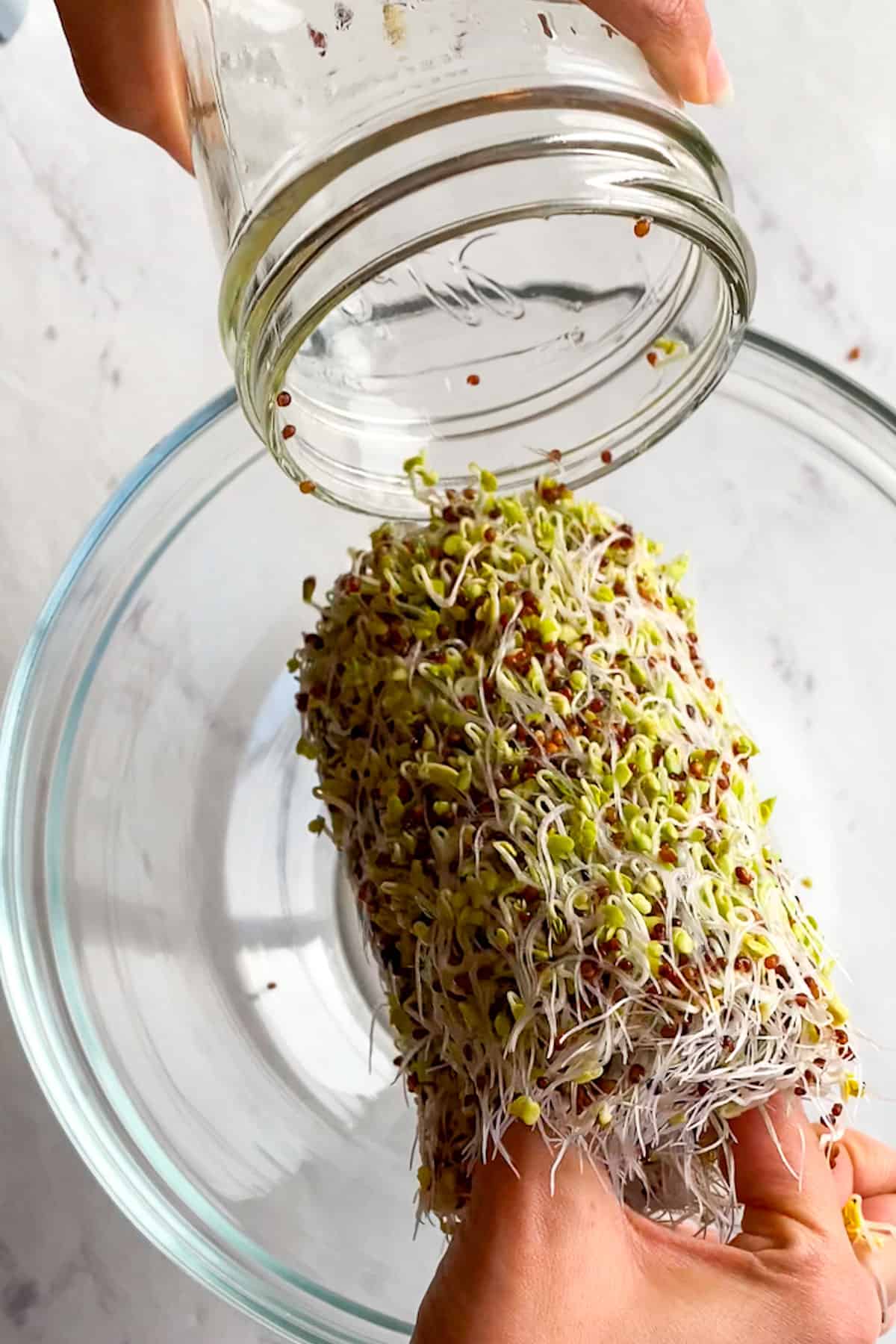
Jump to:
🌱 Broccoli Sprouts Nutrition & Benefits
Most of us have heard of cruciferous vegetables and how healthy they are.
These mustard-family veggies are not only fiber-rich, but they also pack many nutrients like vitamins (C, E, and K), carotenoids, folate, minerals, as well as glucosinolates.
When we chew and digest glucosinolates, they break down into biologically active compounds—including isothiocyanates like sulforaphane.
Out of all edible plants, the highest amount of sulforaphane is found in broccoli sprouts. Research suggests that sulforaphane is beneficial for human consumption in multiple ways.
Frankly, there are too many to list, as research on the compound and related mechanisms are being performed even on the International Space Station.
Here are some of the suggested benefits:
- Reduces risk of several forms of cancer (chemoprevention)
- May prevent cardiovascular disease
- Reduces inflammation
- May improve type-2 diabetes
- Increases eye health and reduces the risk of blindness
- May reduce autism symptoms
- May slow photoaging (UV damage)
Did I convince you yet? If you're still skeptical, read on to find out the mechanism.
Sulforaphane and the Nrf2 Pathway
But what makes sulforaphane so healthy in the first place? It's the hormetic stress effect—aka a toxin that is beneficial in low doses.
This "toxin" has excellent antioxidative properties, especially, its unparalleled induction of the Nrf2 pathway:

The above image demonstrates the Keap1 (oxidative stress sensor protein) -> Nrf2 (antioxidant-regulating factor) -> ARE biological pathway.
This mechanism produces "ARE": Antioxidant Response Elements. Sulforaphane is the most effective natural inducer of Nrf2.
Broccoli vs. Broccoli Sprouts
Now that we understand the mechanism and are hopefully convinced to consume more sulforaphane...couldn't you just eat regular mature broccoli and be done with it?
You could—but you'd be getting up to 40 times less of the antioxidative properties.
Nothing beats broccoli sprouts when it comes to sulforaphane.
🧬 Getting the Most Sulforaphane from Broccoli Sprouts
Remember how we said glucosinolates need to break down into isothiocyanates to be biologically active?
This means that in broccoli sprouts, glucoraphanin needs to be converted to sulforaphane via the myrosinase enzyme.
Technically—broccoli sprouts have no sulforaphane since glucoraphanin and myrosinase occupy different parts of the plant and need to come into contact.
This interaction can be achieved through chewing, freezing, and as the sprouts contact gut bacteria.

1. Timing: Eat or Freeze the Sprouts Right Away
The highest amount of glucoraphanin (precursor to sulforaphane) will be present as soon as the seed leaves pop out of the seed!
In my experience, this usually happens on day 2 or 3. This way, we're also reducing the risk of bacterial growth.
However, if you're not ready to eat them within a few days, freezing is completely fine.
In fact, the freezing process may convert most of the glucoraphanin into sulforaphane on its own.
Just make sure to reincorporate any of the "juices" that leach out while thawing. That liquid likely contains a considerable amount of sulforaphane! That's why I usually only use frozen broccoli sprouts in smoothies.
⛔️ Heads up: unlike broccoli sprouts, mature broccoli lacks the ability to form sulforaphane when frozen! This is why I never buy broccoli from the freezer aisle.
2. Heat the Broccoli Sprouts
Unfortunately, glucoraphanin can form sulforaphane nitrile instead of sulforaphane. We don't want that, as the former kind doesn't trigger the Nrf2 pathway as regular sulforaphane does.
Luckily, heat can help disable the epithiospecifier protein—this makes it more likely that we'll get exactly what we need and not sulforaphane nitrile.
But there is yet another caveat... you don't want too much heat, because after a certain point the myrosinase gets disabled.
Therefore, according to this paper, the best protocol is to heat the broccoli sprouts only up to 70°C (158°F). Feel free to watch this video by Dr. Rhonda Patrick for more information on this.
You could use a thermometer in your kettle, or simply add a cup of boiling water to half a cup of room-temperature water.
This results in 1.5 cups of 74°C water (when at sea level), which will chill when the sprouts are added as well as over time.
3. Add Mustard Seed Powder
Remember how we said cruciferous vegetables are in the mustard family? In fact, most of them are the same plant, called Brassica Oleracea, that has been bred into different varieties!
This is great news for us. It means that we can simply use mustard seeds to ramp up the myrosinase and potentially get more sulforaphane from our sprouts!
Simply add mustard seeds into your blender when consuming sprouts, or grind them up and sprinkle the powder onto salads. It works with mature broccoli as well.

In summary, if you want to extract the highest amount of sulforaphane (up to 4 times) from your broccoli sprouts, do the following:
- Harvest the sprouts as soon as their cotyledons (leaves) pop out of the seed
- Leave the broccoli sprouts at about 70 degrees Celsius water for 10 minutes. Don't discard the water!
- Transfer the sprouts and the soaking water to a blender along with ½ teaspoon of mustard seeds, mix and consume immediately
The above method gives you the most sulforaphane but tasted abhorrent when I tried it.
My favorite way of consuming them is adding a handful of the fresh sprouts to a salad or Buddha bowl, or adding frozen sprouts into a smoothie.
📋 How to Grow Broccoli Sprouts
Sterilize the Seeds
Add 4 tablespoons of broccoli seeds into a quart jar. Fill the jar to 9/10 full with water and add apple cider vinegar until completely full.
Add a drop of liquid dish soap (unscented). Lightly mix and let sit for 10 minutes. Then, put the lid on and rinse with fresh water multiple times (at least five) to remove all soap.
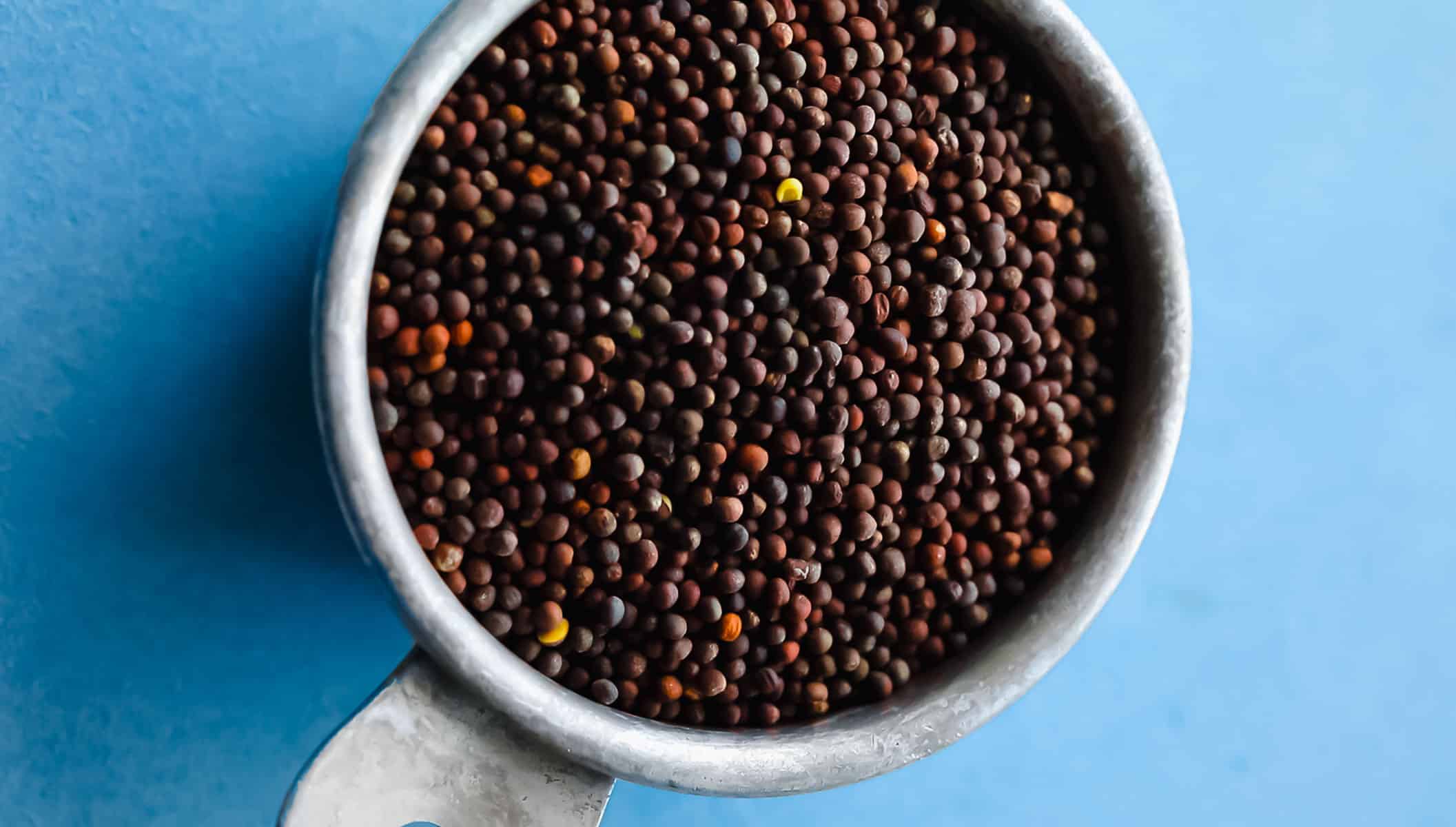
Disclaimer: I personally don't always do this part and luckily never had any problems with just a few quick rinses. But the more I look into it, the more I realize it's quite foolhardy not to sterilize the seeds.
One of the leading scientists in sulforaphane research, Dr. Jed Fahey, warns us that germinated seeds are ideal for bacterial growth, including Salmonella and E. coli...yikes.
He even recommends doing this with a bleach solution. I prefer vinegar and soap.
Long Soak
After the rinse, add fresh water into the jar again and make sure to completely cover all the sprouts. Soak for at least 8 hours—I usually do this overnight. Discard the water.
Keep Them Moist
This is the part that takes days! But don't worry, you only need to pay attention to your sprouts twice a day.
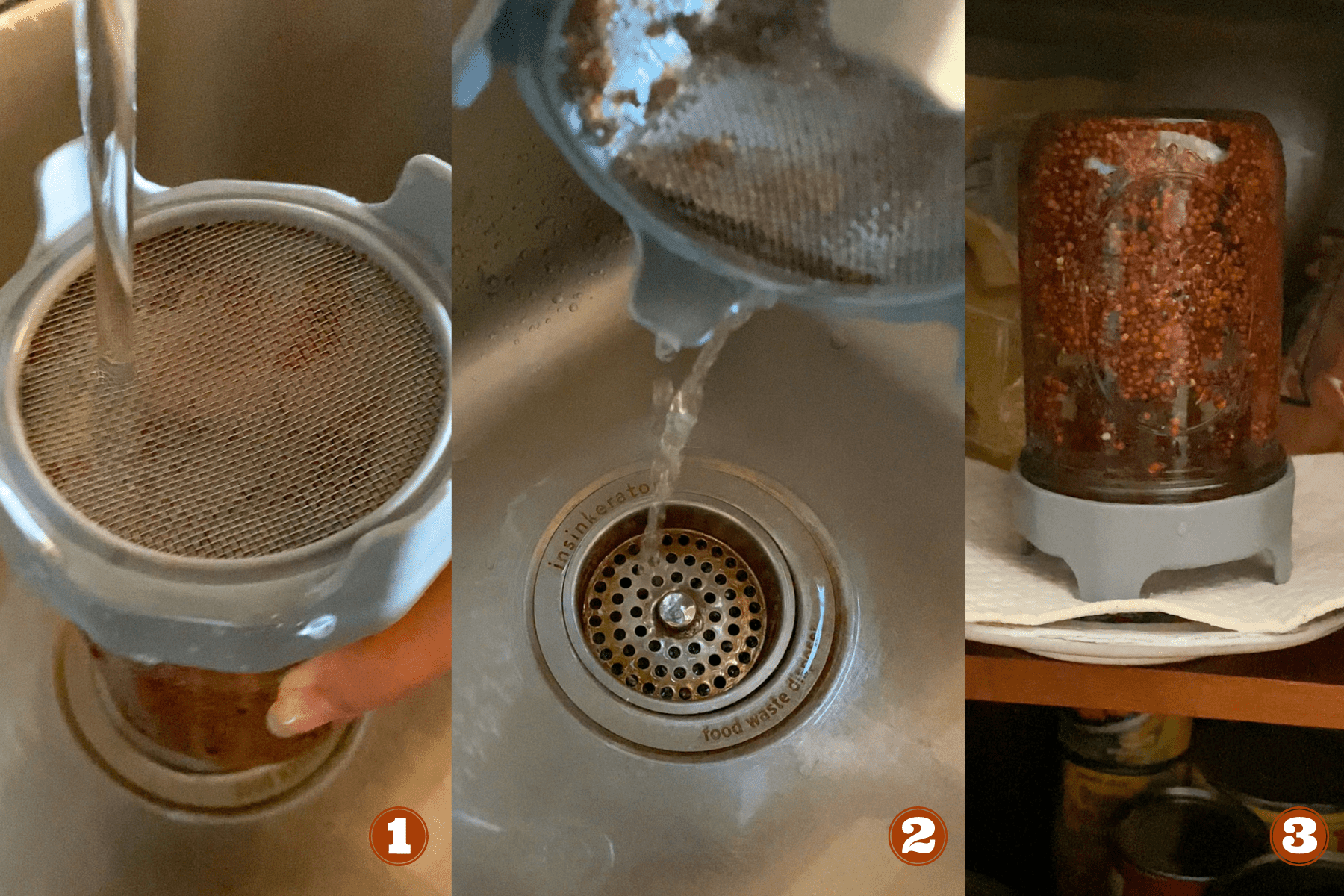
Keep the seeds moist in a dark environment (like a pantry) by rinsing the seeds at least twice a day.
Use a stainless steel mesh lid and stand the jar upside down (or at an angle) to drain excess water.
Repeat for 3-4 days. As soon as leaves shoot out of the majority of the seeds—they’re ready to eat!
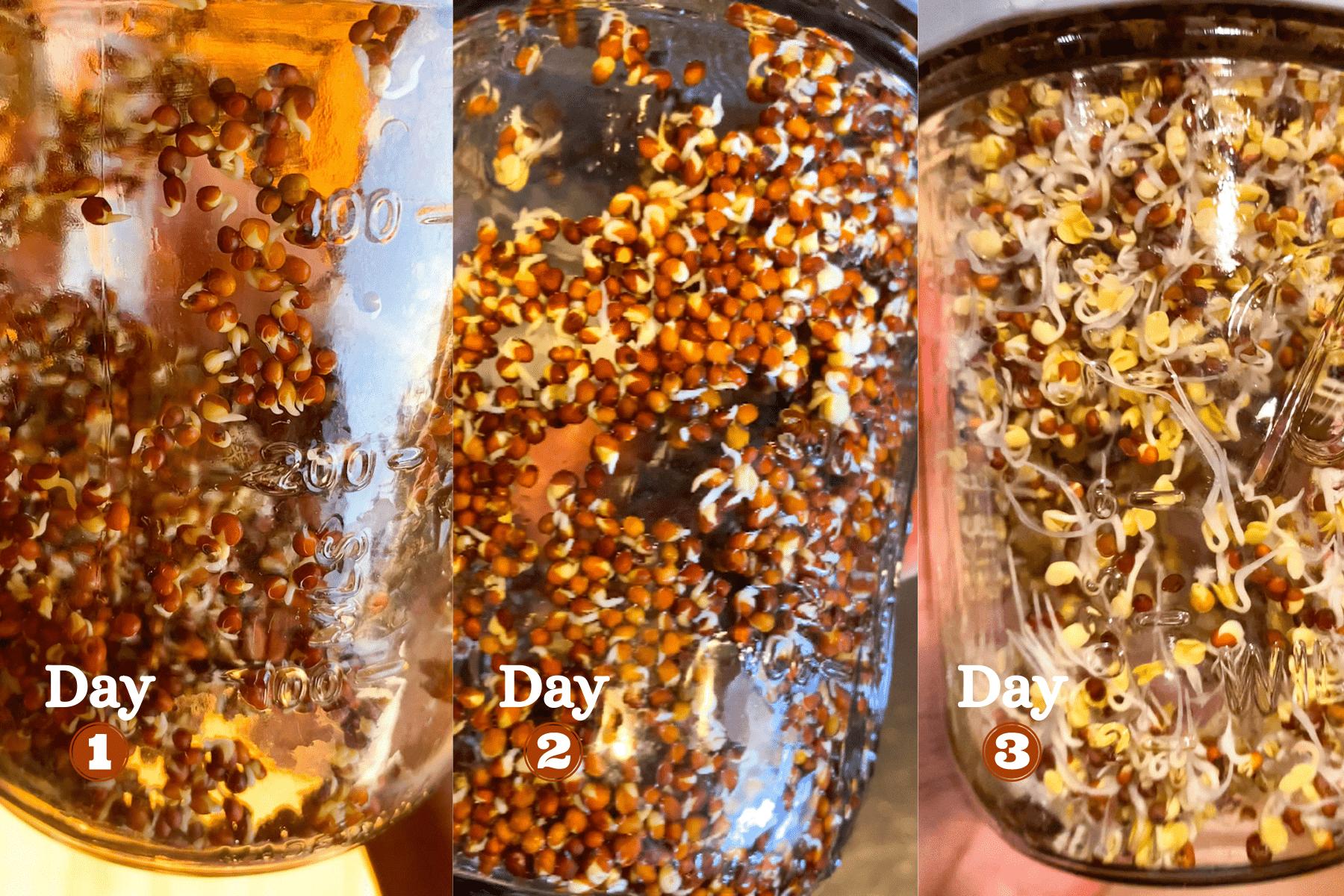
If you'd like the sprouts to turn green (chlorophyll synthesis), make sure to finish up the last few hours of the sprouting process in daylight or artificial light.
This is an optional step that has some nutritional benefits, but it doesn't affect sulforaphane output.
Final Rinse & Save
At this point, as long as the seeds you purchased have a good yield rate, about 80-90% of the seeds must have sprouted.
However, there will still be lots of unsprouted seeds in the jar. This is mostly fine, but personally, I remove them during the final rinse due to concerns about excess erucic acid.
Simply add all contents of the jar into a large bowl and fill with water. The non-sprouted seeds will float on top (or sink to the bottom).
Remove them as best you can—it's fine if you can't get all of them!
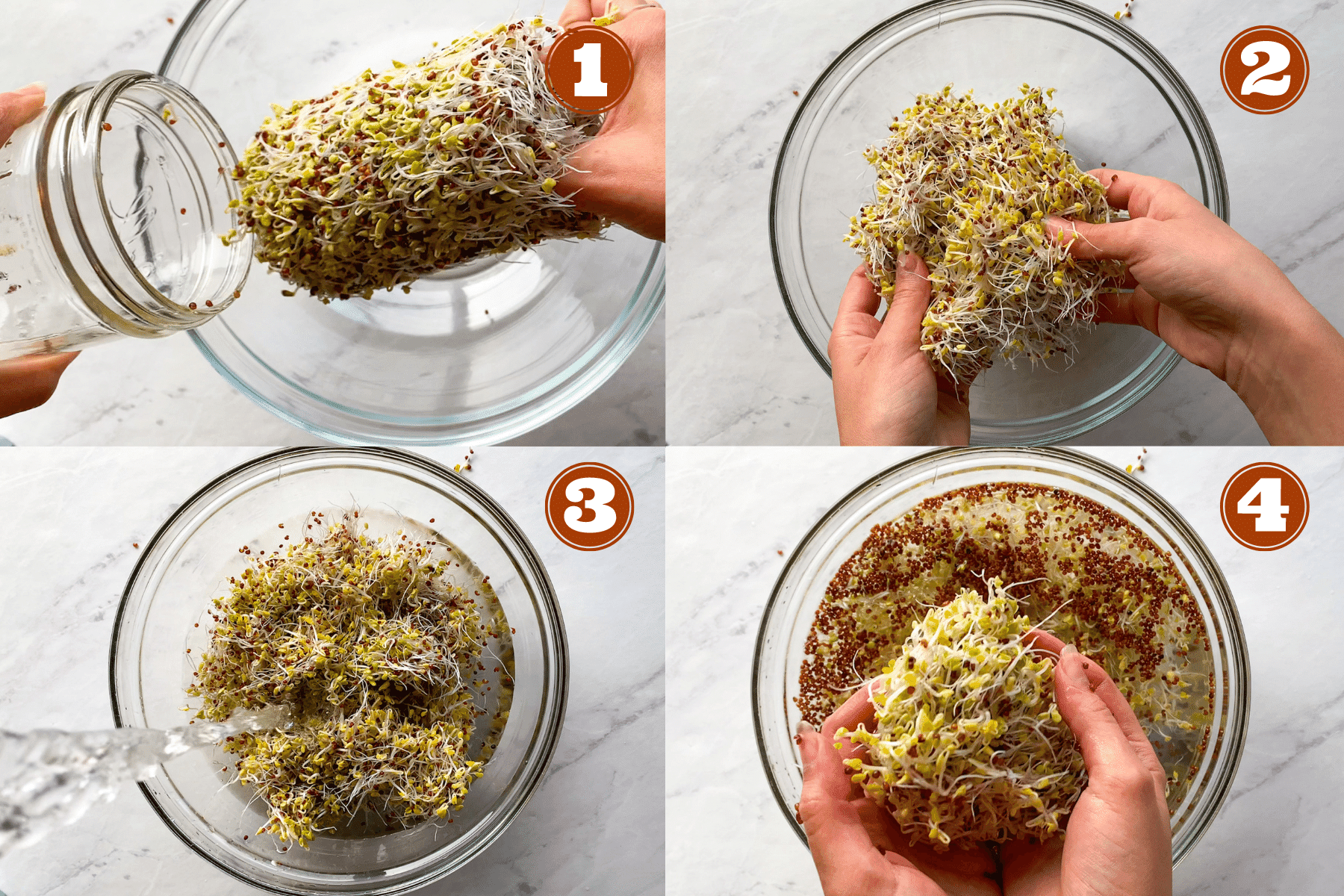
Dry the broccoli sprouts on a dishcloth or paper towels, and save them in an airtight container in the refrigerator for up to 3 days, or in the freezer for up to 3 months.
Best Sprouting Setup
I don't like having too many kitchen utensils with only one purpose. That's why instead of a sprouting "kit", we bought multiple sprouting "lids" that will fit any wide-mouth Mason jar!
The caveat with these is the material, as the metal ones will rust. I recommend a plastic sprouting lid with risers so that they can stand upside down without having to be at an angle.
So the ideal sprouting setup includes:
- 1 quart (32 oz) wide-mouth Mason jar (you could use other sizes if you wish)
- Plastic wide-mouth sprouting lid
- Small plate with dishcloth
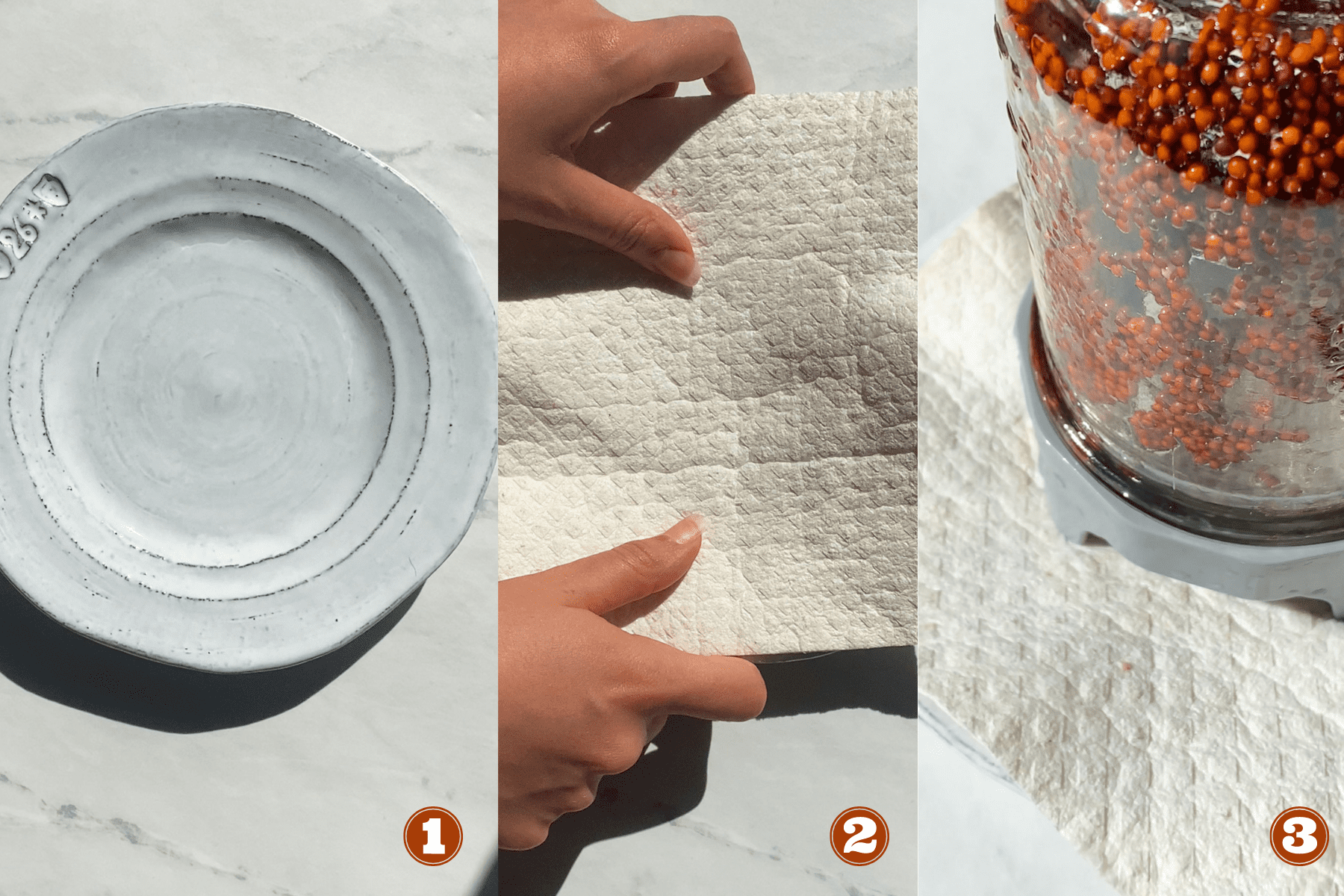
The jar doesn't need to be at an angle at all when using a plastic lid with risers. It can stand upside down and still drain. This saves space and makes sprouting so much easier!
You'll also see sprouting "trays" online, like this one. I never tried one of these and don't plan to, because they seem somewhat more tedious to operate and clean.
If you don't want to invest in anything at all, you can even use cheesecloth or a wire mesh colander as a sprouting screen!
Saving Time: Scale Up!
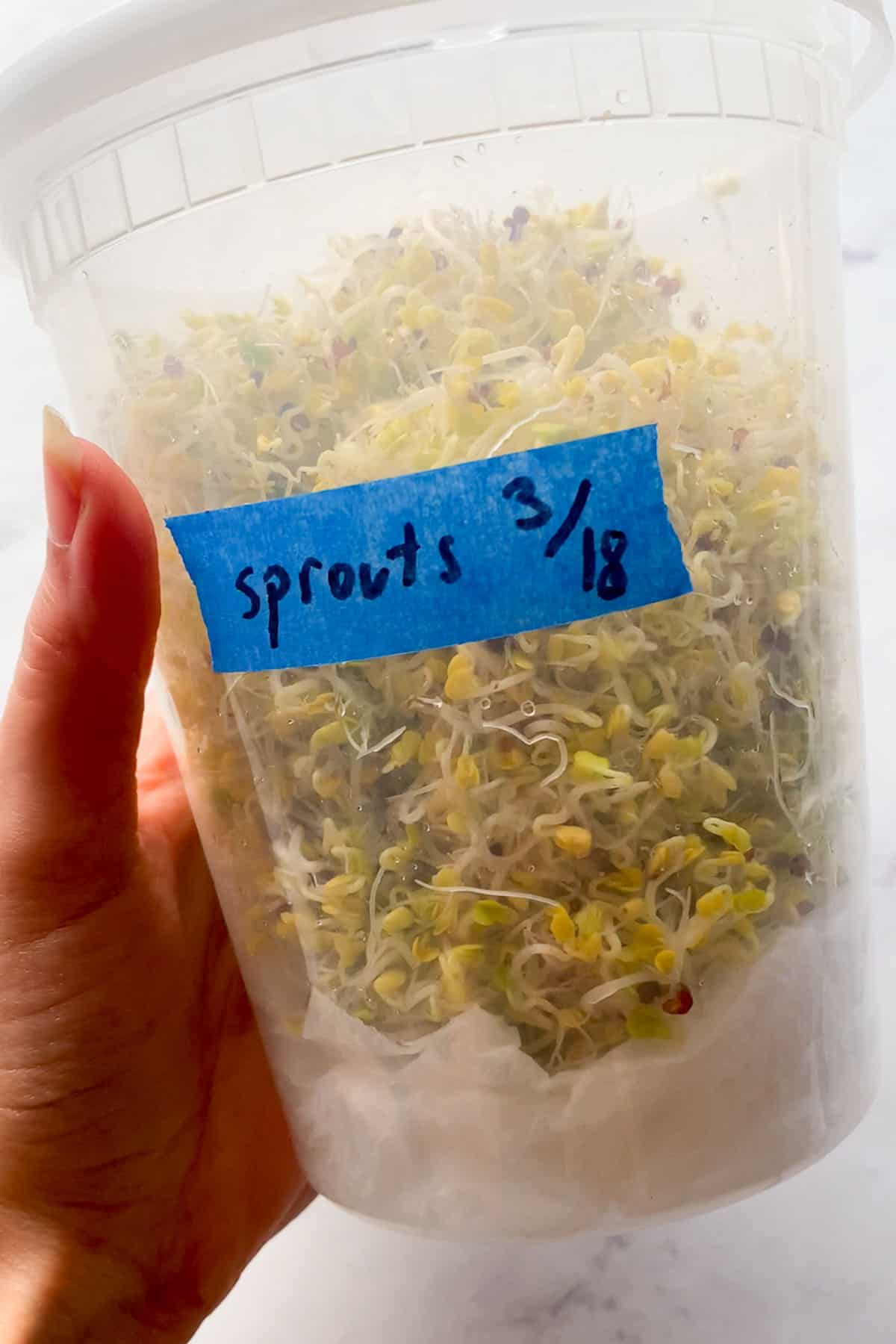
If you think all this sounds like too much to do on an ongoing basis, simply scale up!
As we said earlier, freezing works wonderfully as long as you incorporate the liquid leaked out while thawing.
So once a month or every other month, scale up to as many jars as you like, or do it in gallon jars instead to freeze!
🥗 Ways to Eat Broccoli Sprouts
On their own, broccoli sprouts are quite bitter and pungent. Think of radish, but times five. That's why for most people it'll be preferable to eat sprouts alongside other, "tastier" foods to help it go down.
For non-frozen broccoli sprouts, here's what I like to do:
- top Buddha bowls
- mix into salads
- add onto avocado toast
- or just eat them out of the container as is!
For frozen broccoli sprouts, the best way is to chuck them into a blender. Either on their own (tastes pretty awful) or as part of a smoothie (you won't even notice).
🍽 Nutrition Facts
The below information is from the online nutrition calculator Cronometer. There are 50 calories in 90 grams (about 1 cup) of broccoli sprouts.

❓ FAQs
Most likely, no! What you are seeing is probably the micro-roots that become visible when the sprouts are dry. These feathery roots help with drawing in water and they will disappear after rinsing. Here's what they look like (taken 12 hours after rinsing):
Whatever the sprouts look like—the smell test rarely lies! So make sure to smell the sprouts. If it's a bit off, don't risk it and start a new batch. In case this is your first time ever coming close to sprouts, note that the bitter smell is normal.
If still in doubt, see this post for a comparison between feathery sprout micro-roots and actual mold.
Including the initial 8-hour soaking, sprouting broccoli takes 3-5 days in total. The sprouts will give you the highest amount of glucoraphanin (precursor to sulforaphane) as soon as the seed leaves pop out of the seed!
For me, this usually happens on day 3 or 4.
I've always bought broccoli seeds on Amazon; this one has a great sprouting yield (80-90%)—but isn't organic. I'll purchase these organic seeds next.
Your local plant nursery may also carry them, but they'll usually be in tiny paper bags meant for growing a mature broccoli "tree".
In my experience, after about 18 to 24 hours of the last rinse—the sprouts always looked off, and rinsing them again didn't bring them back.
That's why I would suggest restarting the process. Your mileage may vary, let your eyes and nose be your guide.
This is most often a problem when using sprouting trays as opposed to jars. I would use a jar next time where you can easily clean out the lid and put it back on.
If using a tray, pick out some of the sprouts that are blocking the drain and continue sprouting. You may have to do this for sprouts since the drain area will be large, which will likely harm them.
Absolutely! In fact, it's a great way to preserve nutrients and save time after sprouting a few batches of broccoli seeds.
Just make sure to consume the liquid that oozes out of thawed sprouts if you do so. That "juice" likely has tons of glucoraphanin (which will become sulforaphane)!
My favorite way of consuming frozen broccoli is adding them to smoothies...you won't even taste it!
Out of all edible plants, broccoli sprouts carry the highest amount of glucoraphanin (precursor to sulforaphane).
Sulforaphane is the most effective natural inducer of the Nrf2 pathway, making it one of the strongest antioxidants.
100 grams (little more than 1 cup) of broccoli sprouts may contain as much as 1200 milligrams* of sulforaphane, as opposed to up to 170 milligrams in mature broccoli per the same weight.
*Please keep in mind that the above 1200 milligram figure is an estimate and requires treating the broccoli sprouts with heat to extract the highest amount of sulforaphane available.
A study suggests that "the bioavailability of sulforaphane can range from 1 to 40%, with a mean at 10%."
These outcomes seem to be affected by the person's gut microbiome, genetics, and metabolic differences.
Dr. Jed Fahey recommends up to about 2-4 oz (1-1.5 cups) per day, but benefits may be experienced by eating far less.
Although no upper limit for humans is known at this time, Dr. Jed Fahey recommends no more than 4 ounces (about 1.5 cups or 110g) of broccoli sprouts per day.
Note that this suggestion doesn't stem from research, but rather from his personal experiences of palatability.
Personally, I've never been able to eat more than about 3 oz...4 oz is a lot!
They taste very similar to mature radish—pretty bitter with a pungent aroma. Believe it or not, this is a good thing!
It means they have lots of glucoraphanin, as this sulforaphane precursor contains sulfuric compounds.
More sulfur = more antioxidants!
This is likely due to an intolerance for the type of fiber or some other component of the sprouts.
I can't guarantee this will work—but if it were me, I'd try adding them into a smoothie so that everything is broken down before going into my gut.
Worst case scenario, you could try sulforaphane supplements. It wouldn't be my first choice, but they do exist.
Unfortunately, yes. Due to the risk of bacterial contamination in sprouts, the FDA doesn't recommend fresh sprouts to very young, very old, or immunocompromised people.
So make sure to follow the sanitizing directions in the guide.
Did you know?
Glucosinolates found in cruciferous vegetables contain sulfur, which is responsible for their bitter flavor.
So next time you bite into a raw kale salad and the pungent aroma hits you, hope you'll remember this and take another bite 🙂
💙 Other Healthy Aegean Delight Recipes
Try the sprouts on the kale salad, in the amla (another superfood!) smoothie; or increase happiness levels with the saffron oatmeal and get all the benefits of curcumin with a golden latte:
Did you use this broccoli sprouting guide? I'd love to hear about it! Please comment and leave a star🌟 rating below. This helps me run Aegean Delight and I always appreciate it 🙂
Print📖 Recipe
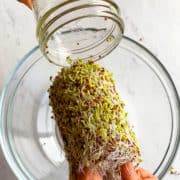
Growing Broccoli Sprouts for Highest Sulforaphane
- Total Time: 96 hours
- Yield: 2 cups 1x
- Diet: Vegan
Description
A complete guide for growing broccoli sprouts with tips for getting the MOST sulforaphane from your seeds! You'll also find out why broccoli sprouts are one of the most nutritious, healthiest foods we can imagine.
Ingredients
For Sprouting:
- 5 tablespoons of broccoli seeds
- water
For Sterilizing:
- 3 tablespoons apple cider vinegar
- 1 drop of liquid dish soap (unscented preferred)
Suggested Equipment:
- Wide-lid quart Mason jar
- Stainless Steel mesh lid
- Small plate with a dishcloth
Instructions
Sterilize the Seeds
- Add the broccoli seeds into a quart jar. Fill the jar to 9/10 full with water and add apple cider vinegar until completely full.
- Add a drop of liquid dish soap. Lightly mix and let sit for 10 minutes. Put the lid on and rinse with fresh water multiple times (at least five) to remove all soap.
Soak
- After the rinse, add fresh water into the jar again and make sure to completely cover all the seeds (at least 1" above the seeds). Soak for at least 8 hours or overnight. Discard the water.
Sprout
- Keep the seeds moist in a dark environment (like a pantry) by rinsing the seeds at least twice a day. Use a stainless steel mesh lid and stand the jar upside down (or at an angle) to drain excess water. Repeat for 3-4 days. As soon as leaves shoot out of the majority of the seeds—they’re ready to eat!
Optional: If you'd like the sprouts to turn green (chlorophyll synthesis), make sure to finish up the last few hours of the sprouting process in daylight or artificial light. This step has some nutritional benefits, but it doesn't affect sulforaphane output.
Optional: Pick Out Unsprouted Seeds
- At this point, as long as the seeds you purchased have a good yield rate, about 80-90% of the seeds must have sprouted. However, there will still be lots of unsprouted seeds in the jar. This is mostly fine, but personally I remove them during the final rinse due to concerns about excess erucic acid. Add all contents of the jar into a large bowl and fill with water. The non-sprouted seeds will float on top (or sink to the bottom). Remove them as best you can—it's fine if you can't get all of them!
Enjoy Now or Save
- Dry the broccoli sprouts on a dishcloth or paper towels, and save them in an airtight container in the refrigerator for up to 3 days, or in the freezer for up to 3 months. I love using fresh sprouts in Buddha bowls or salads. *If using frozen sprouts, making a smoothie is the best way as you don’t want them to lose any liquid while thawing.
Notes
Getting the Most Sulforaphane (up to 4 times): 1) Harvest the sprouts as soon as their cotyledons (leaves) pop out of the seed. 2) Leave the broccoli sprouts at about 70 degrees Celsius water for 10 minutes. Don't discard the water! 3) Transfer the sprouts and the soaking water to a blender along with ½ teaspoon of mustard seeds, mix and consume immediately.
Scale Up: If you think all this sounds like too much to do on an ongoing basis, simply scale up! As we said earlier, freezing works wonderfully as long as you incorporate the liquid leaked out while thawing. So once a month or every other month, scale up to as many jars as you like, or do it in gallon jars instead to freeze!
Jar Size: You can use any jar/tray you wish! Just leave enough room for sprouting by using up to 2 tablespoons of broccoli seeds per cup.
If you have other questions—check out the FAQs in the post or leave a comment.
- Prep Time: 96 hours
- Category: Healthy
- Method: Sprouting
- Cuisine: Universal
Nutrition
- Serving Size: 1 cup
- Calories: 50
- Sugar: 0
- Sodium: 9.3 mg
- Fat: 0
- Carbohydrates: 6.1 g
- Fiber: 3.5 g
- Protein: 4.5 g
- Cholesterol: 0


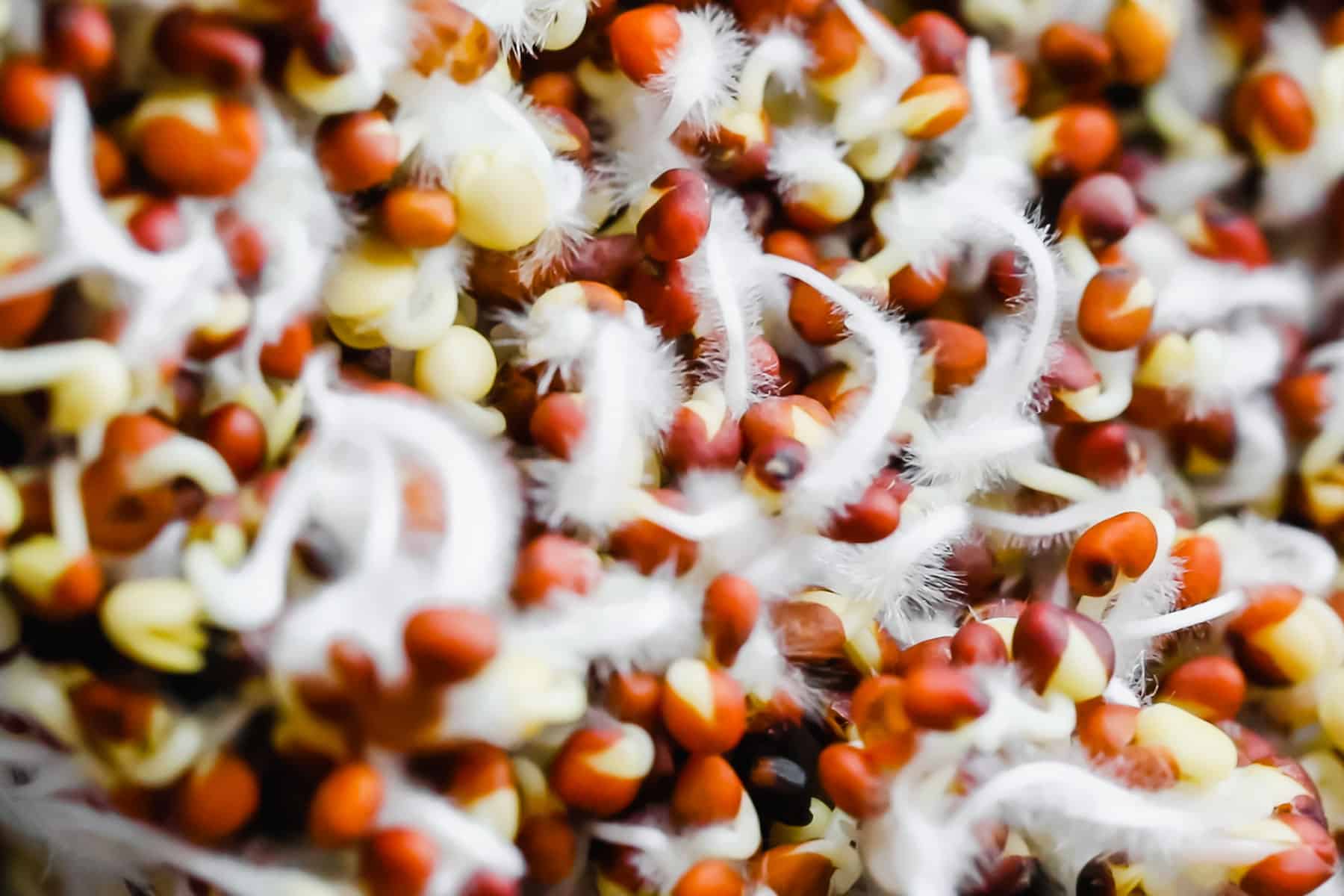
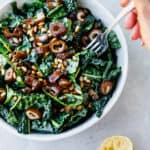
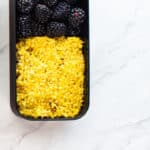
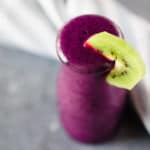

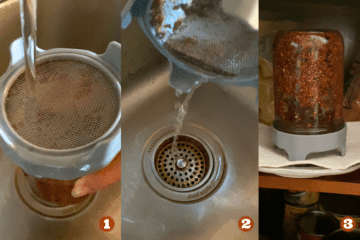
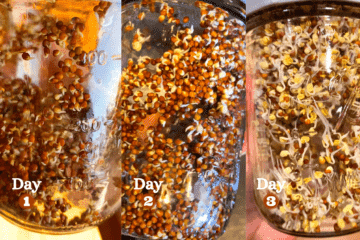


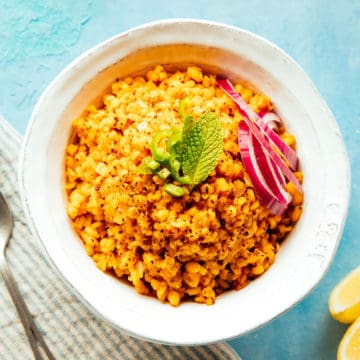

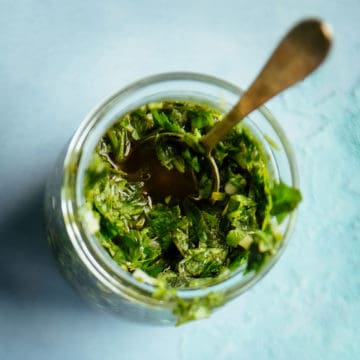
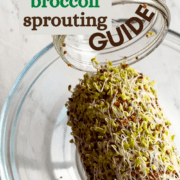
Daryl Vines
Do you have any data about dehydrating the sprouts at 105-115 F?
Gönül
Sorry, I've never looked into dehydrating them. After a bit of online research, I haven't found anything on this. If you're asking in terms of best storage methods—for long term I'd still recommend fast freezing as stated by Dr. Jed Fahey. Hope this helps!
Chris
Thank you so much. This is the most in depth sprouting guide I came across. Soaking them in vinegar and soap sounded weird at first but now I understand why it’s necessary. Made 4 jars a few times following this and kept what we couldn’t eat in the freezer.
Gönül
You're most welcome! Glad you found it helpful!
Bob
Hi Gönül,
I love the article and appreciate the consolidated information. One thing I notice however, is the reference source for "likely prevents hair loss" links to a study that states "Daily intake of alfalfa sprouts, but not broccoli sprouts, influence plasma levels of androgen in middle-aged males".
Do you have a source that states broccoli sprouts help with hair loss in humans?
Thanks
Gönül
Hi Bob, apologies for that mistake! I thought I double-checked all the resource links but apparently didn't. The hair loss reference in the article has been removed completely as I couldn't find a reputable resource to back the claim. There is supposedly a study conducted by "Kinki University" in Japan that a supplement company sponsored; however the link to the study is a 404: http://ajw.asahi.com/article/behind_news/social_affairs/AJ201402050057.
I did see anecdotes on a Reddit thread that talked about this so it could be useful.
Thanks very much for alerting me again and I hope this helps!
Best,
George
Great write-up. You mention that just over a cup of sprouts has around 1200mg of sulforaphane.
One of the few supplements with pure sulforaphane out there, BROQ, has 10mg of sulforaphane per tablet - 2 tablets per serving, so 20mg all up. After doing some research I found that about 70% of the sulforaphane in those supps is absorbed.
Do you know, on average, how much of the sulforaphane of consumed broccoli sprouts is bioavailable? and how much is absorbed? Im really curious about hoiw much of that 1200mg I'm actually getting.
It's crazy to think that just over a cup has 1200mg, then heating to 70c could increase that number up to around 3500-4000mg of sulforaphane. Especially when comparing that to an entire $60 bottle of BROQ (1 month supply) which has only 600mg of sulforaphane.
Thanks!
Gönül
Hi George, thank you so much for the feedback!
I agree, the sulforaphane content in broccoli sprouts as opposed to pretty much anything else (including supplements) is astonishing. The 1200mg figure is on the higher end of sulforaphane output estimates that would be achieved by heating to 70C; therefore, I'm afraid getting to 3000mg by consuming 100g of broccoli sprouts may not be possible. Here's a research paper all about getting the most out of these sprouts. The post has now been updated to clarify this so thanks again for bringing it to my attention!
I don't have enough information regarding bioavailability, but this passage from a research paper stands out: "This conversion, which we also refer to as bioavailability, ranges from 1 to 40%, with a mean of about 10%. This huge range depends primarily on the specifics of the microbiome of the person ingesting it, as well as a host of other unknown anthropomorphic factors (e.g., genetics, diet, and metabolic differences between people.". My guess is that the returns are diminishing, and that may be why Dr. Fahey ( a lead sulforaphane researcher) only recommends up to 1 1/2 cups per day.
Hope this helps!
Best,
Jon
[from the link in your comment] '''Conclusion
In the present study, several factors, including solid–liquid
ratio, hydrolysis time, ascorbic acid addition and temperature, presented significant effects on sulforaphane production from glucosinolate."""
I am still trying to absorb everything in that paper: it looks like adding ascorbic acid during the sprouting positively increases sulforphane ! Would you please followup and (hopefully) modify your instructions based on the research?
The part about solid-liquid ratio and hydrolysis time has me stumped atm 🙁
Gönül
Hi Jon, thanks so much for leaving a rating and comment! Much appreciated.
I will look more closely into the addition of ascorbic acid for a further sulforaphane increase. As ascorbic acid is a more obscure ingredient in its pure form, I'm not sure how practical it would be for most people to incorporate it into their sprouting process. If it weren't full of sugar, I'd suggest adding a few teaspoons of orange juice to the sprouts each day for those who'd like to experiment... but that would create a very happy environment for microbial growth I'm afraid.
Jon
TYVM for the response ... Vitamin C in powder form is readily available from health food stores in my area, as well as on Amazon etc. Or are you saying that a more technical (ie expensive formulary) grade is needed?
Currently I make liposomal Vitamin C at home, and take that before drinking my sproats infused smoothie, to hopefully get some benefit from a synergy. Reality is likely that C is needed during the growing of the seeds.
Can you please have a close look at how they used C in their paper and let me know even if you dont try it yourself? ATM I need all the help I can get from the sulforaphane for health reasons.
Stay well, Jon
Gönül
I see these passages in the study:
"Freeze-dried samples (0.2 g) were suspended in pH 3.0 acidic water at various solid–liquid ratios (1:20, 1:30, 1:40, 1:50 and 1:60) with various content of ascorbic acid (0, 2, 3, 4 and 5 mg/g DW)."
"Other researchers have that reaction conditions of 25C and pH 4.0, as well as the addition of 0.02 mg/g ascorbic acid are suitable for hydrolysis. An appropriate amount of ascorbic acid added to the hydrolysis solution can increase sulforaphane content, which may be attributed to the activity of a noncompetitive activator of myrosinase. Excess ascorbic acid, however, could inhibit sulforaphane formation."
Sounds like they used freeze-fried samples to begin with (difficult to replicate at home) and they also state that excess ascorbic acid (I'm assuming anything above 4mg per gram of sprouts' dry weight). Personally I would err on the side of caution and not introduce vit C to this process at all—but feel free to experiment!
Sorry I couldn't be of more help! Dr. Jed Fahey from Johns Hopkins is the expert in this field, you could try shooting him an email for more clarification. This page has his contact information:
Best of luck!
D
Thanks for the article. A few questions...
If someone purchased broccoli sprouts already sprouted from the store, could one then freeze and increase the sulf -? Or does it have to be done right away with at home sprouting?
Also if one wants to sprout a lot so they can have at least a month supply of frozen, if one uses a large half gallon jar, how much max seeds can one put in one jar? Or should they be spread out into many different 32 oz jars? Learning.
Thanks
Thanks
Gönül
Hi there!
"If someone purchased broccoli sprouts already sprouted from the store, could one then freeze and increase the sulf -? Or does it have to be done right away with at home sprouting?"
-My guess is the increase in sulforaphane by freezing store-bought sprouts would be minimal. I'd suggest sprouting at home to ensure the highest amounts.
"Also if one wants to sprout a lot so they can have at least a month supply of frozen, if one uses a large half gallon jar, how much max seeds can one put in one jar? Or should they be spread out into many different 32 oz jars?"
-You can absolutely use a larger jar! If using a half gallon jar, double the amount (5 tbsp to 10 tbsp or approx. 1/2 cup). If using a gallon jar, quadruple. I like to use the smaller jars because it's easier to take the sprouts out at the end.
Hope this helps!
Cheers,
Victor
https://pubmed.ncbi.nlm.nih.gov/30263824/
According to the results, the addition of radish, rocket and rape sprouts to broccoli sprouts could promote the hydrolysis of the glucoraphanin to anticancer effective sulforaphane to 2.03, 2.32 and 1.95-fold, respectively, compared to single broccoli sprouts. However, the addition of mustard sprouts had no positive effect.
Gönül
Thanks for sharing this!
R.P. Campbell
Great article! Could I heat an entire batch of freshly grown broccoli sprouts to 60 C and then freeze them in portions to reduce the nitrate formation? I would then eat the frozen portion with mustard.
Gönül
Thanks so much for leaving a comment! Yes, that process sounds good to me. I would just be careful while consuming the thawed sprouts—make sure to incorporate the juices as well! Smoothies are the easiest way to do that.
Jas
Hi awesome article, do you see any problems with this process below.
In your article you say you should ingest the water sprouts have been 'cooked' in ( 70 degrees for 10 minutes). Can you then blend sprouts and cooking water (with added mustard seeds), let cool down and add liquid to something like large silicone ice cube trays, then freeze for a consistent dose in smoothies? Thanks
Gönül
Hi Jas, thanks for your comment! I don’t see why not.. would make it easy to add to your smoothies on the go! Cheers
LarryOfCary
You spelled Brassica Oleracea which any botanist or person knowledgeable about plants would know is Brassica oleracea. Only a naive, neophyte would capitalize Oleracea which is forbidden in the nomenclatural codes. I like your material but you give yourself away with this lack of basic knowledge. The same is true of herbal products. Ginkgo Biloba and not biloba...I know they have no botanical experience at all.
Gönül
Thanks for the info! Though I'm not sure how I'm "giving myself away" with this capitalization error as I never claimed expertise in botany.
Mike
Can the addition of powdered mustard and/or ground mustard seeds to store-bought frozen broccoli florets that have been microwaved produce sulforaphane?
Gönül
Sorry, I don't know if it would. You could look into this article that mentions the process for broccoli instead:
dan swanson
There were some reports about people using seeds to make tea? Any recipe available on making tea directly from seeds or even using the sprouts that I grow to make tea?
Gönül
I've never heard of this practice and am not sure whether the sulforaphane would transfer to tea--but theoretically at least some of it should. Quick Google research found a small study that states "In the broccoli-seed tea experiment, the presence of fatigue at baseline was reported by all eight participants.During the experiment the score for fatigue was progressively attenuated in all eight participants over the six-week period." They also mention that placebo effect may be the cause for that improvement, though.
Sorry, don't have a recipe for the tea! But if I were to develop one, I'd make sure to wash the seeds thoroughly and do a warm brew instead of hot over a long period. Hope this helps!
Geert
Thanks!
Dez Mundie
Does ingesting the broccoli sprouts with dairy milk affect the absorption of sulforaphane? I saw it on a youtube video, so I'm not sure of its validity.
Gönül
I have no idea how dairy and sulforaphane interact—sorry! A quick Google search didn’t yield any relevant results either
Tirzah
Thx for your oh-so-helpful broccoli sprouts article! One question: would adding ground mustard seed to my frozen-broccoli-sprouts smoothie increase sulforaphane even more?!
One comment: Jed Fahey in his interview with Rhonda Patrick said that not all crucifers contain sulforaphane, i.e. cabbage, cauliflower, and that the only kale with sulforaphane is red Russian kale!...Tirzah
Gönül
Hi Tirzah! Hmm—I couldn’t say that the ground mustard seeds would increase the sulforaphane more because I haven’t run into that exact experiment while researching this topic—but it hypothetically should? In any case, don’t see the harm in it!
Interesting about not all cruciferous veg not containing it—I’ll have to listen to that interview again!
Thank you for your thoughtful comment 🙂
Michiel
Great article!
I have been doing sprouts for the last 2 years and learned from your video that I’m not using enough seeds (1Tbsp). I do get about half a jar.
I do add some radish sprout seeds as well as it add extra myrosinase, as I have understood.
Regarding sterilization, I add a little food grade hydrogen peroxide when I soak the seeds overnight . It kills any pathogens and H2O2 just becomes H2O… seems to work well and not a lot work.
Greetings from my future me from Malta
Gönül
Hey Michael, great tips about sterilization! Thanks for your comment!
RJ
Appreciate the thoughtful and detailed sprouting process from an engineer.
I like the mentioning of the scientific paper.
Do you have suggestions for efficiently removing the hulls from the sprouts when rinsing them? It has been very tedious for me.
Gönül
Thanks for your feedback, RJ!
Unfortunately I have been dealing with the hulls the same way all this time. Tedious indeed. Some people say they don’t bother with separating them at all, so I might try that in the future and see how it goes. Please keep me posted if you figure out a better way 🙂